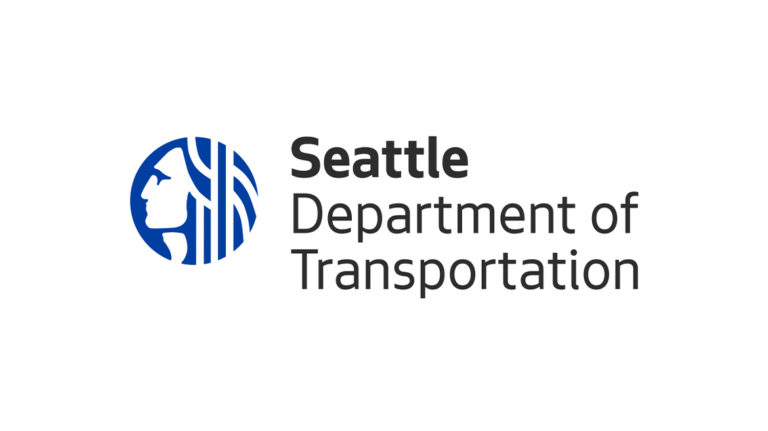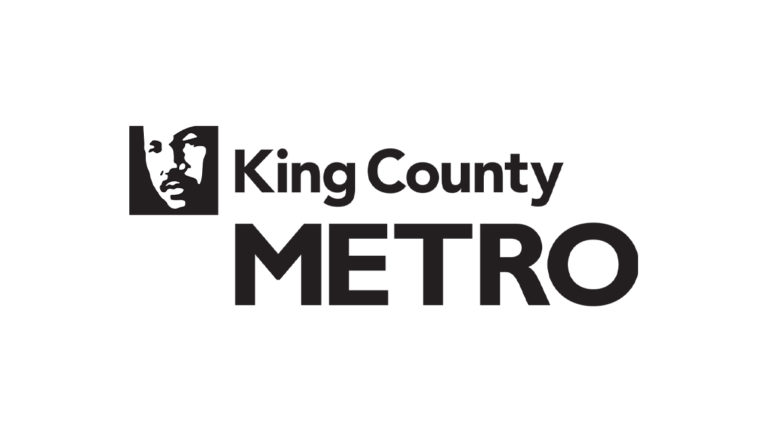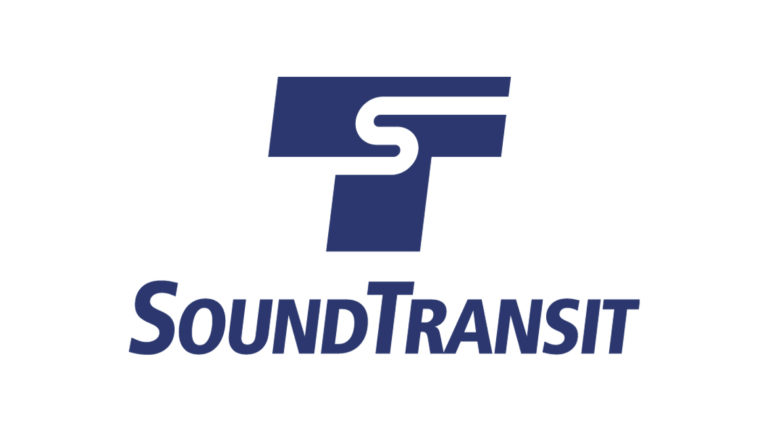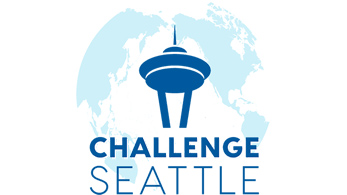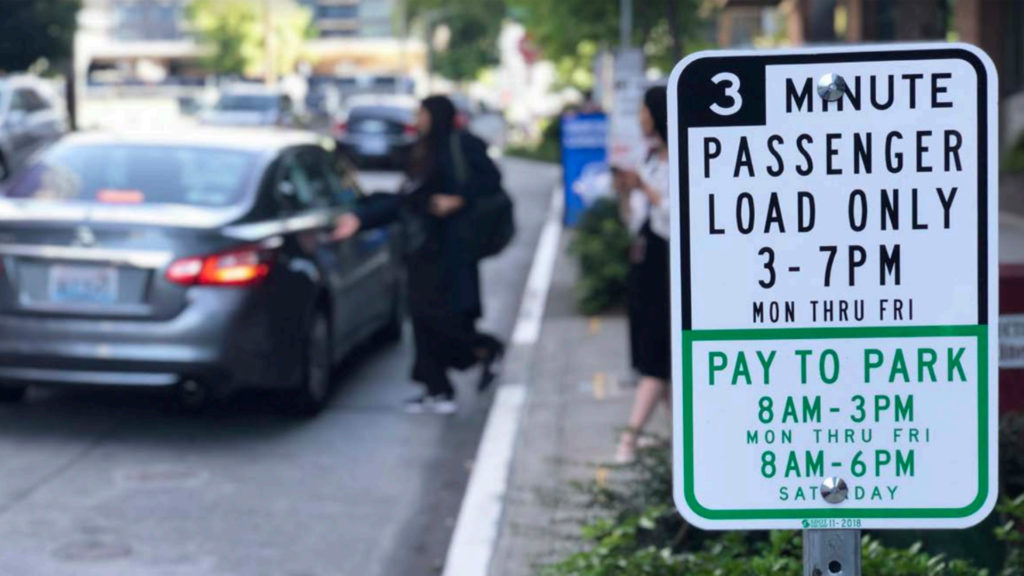
Issue
Like many congested cities, Seattle is grappling with how best to manage increasing use of ride-hailing service by Transportation Network Companies (TNCs) like Uber and Lyft. According to a 2018 Seattle Times analysis, TNC ridership in the Seattle region has grown to more than five times the level it was in the beginning of 2015, providing, on average, more than 91,000 rides a day in 2018. And the newspaper reports Uber and Lyft trips are heavily concentrated in the city’s densest neighborhoods, where nearly 40,000 rides a day start in ZIP codes covering downtown, Belltown, Capitol Hill, and South Lake Union.
Spark
Broad concerns about congestion, safety, and effective curb use led to this study, conducted by researchers at the UW’s Urban Freight Lab and Sustainable Transportation Lab. To try to mitigate the impacts of passenger pick-up/drop-off activity on traffic, the city proposed a strategy of increasing passenger loading zone (PLZ) spaces while Uber and Lyft implemented a geofence, which directs their drivers and passengers to designated pick-up and drop-off locations on a block. By providing ample designated pick-up and drop-off spots along the curb, the thinking goes, TNC drivers would reduce the frequency with which they stop in the travel lane to pick up or drop off passengers and the time they stay stopped there.
Overview
This University of Washington (UW) study focuses on a strategy to manage TNC driver stops when picking up and dropping off passengers with the aim of improving traffic flow in the South Lake Union (SLU) area. SLU is the site of the main campus for Amazon, the online retail company. The site is known to generate a large number of TNC trips, and Amazon reports high rates of ride-hailing use for employee commutes. For this study, researchers analyzed an array of data from video and sensor technology as well as in-person observation. Researchers also surveyed TNC passengers for demographic, trip-related, and satisfaction data. The five Amazon buildings in the area studied house roughly 8,650 employees.
Innovation
The researchers found the increased PLZ allocation and geofencing strategy worked in that it improved driver compliance, reduced dwell times, and boosted TNC user satisfaction. However, this may encourage commuters to use TNC. The passenger survey clearly shows that TNC service is attracting passengers who would have otherwise walked or used transit. While in the short term, the increased PLZs and geofencing had a positive effect on traffic. If this induces TNC demand, there could be larger, more negative long-term consequences.
If the end goal is to reduce traffic congestion, measures to reduce—rather than encourage—TNC and passenger car use as the predominant mode of commuting will yield the most substantial benefits.
Materials
- Read the report
- View the press release
Impact
“This study provides data to help us make informed decisions about managing space and reducing conflicts on crowded Seattle streets,” said SDOT Manager of Curbside Management Mike Estey. “Ride-hail apps are still a new and evolving industry with a very big impact on our transportation system. We’ll consider how this approach could reduce conflicts, especially around stadiums and popular nightlife hotspots.
Media Coverage
September, 2019 | Geekwire | Project: Curb Allocation Change Pilot
As Uber and Lyft pick-ups and drop-offs clog traffic, new study calls load zones a move in right direction
September, 2019 | Seattle Times | Project: Curb Allocation Change Pilot
Seattle Uber and Lyft drivers often stop in the street to pick up or drop off riders. Here’s a way to reduce that.
September, 2019 | KOMO | Project: Curb Allocation Change Pilot
Seattle tests rideshare load zone to ease traffic frustration
September, 2019 | Kiro 7 | Project: Curb Allocation Change Pilot
Rideshare & Traffic Woes
Team
The pilot was sponsored by the Mobility Innovation Center with funding from the Seattle Department of Transportation, Amazon, King County Metro, Sound Transit, and Challenge Seattle. Geofence implementation support was provided by Uber and Lyft.
Academic Department
Faculty Leadership
Contributors
- Don MacKenzie
- Andisheh Ranjbari
- Jose Machado
- Giacomo Dalla Chiara

